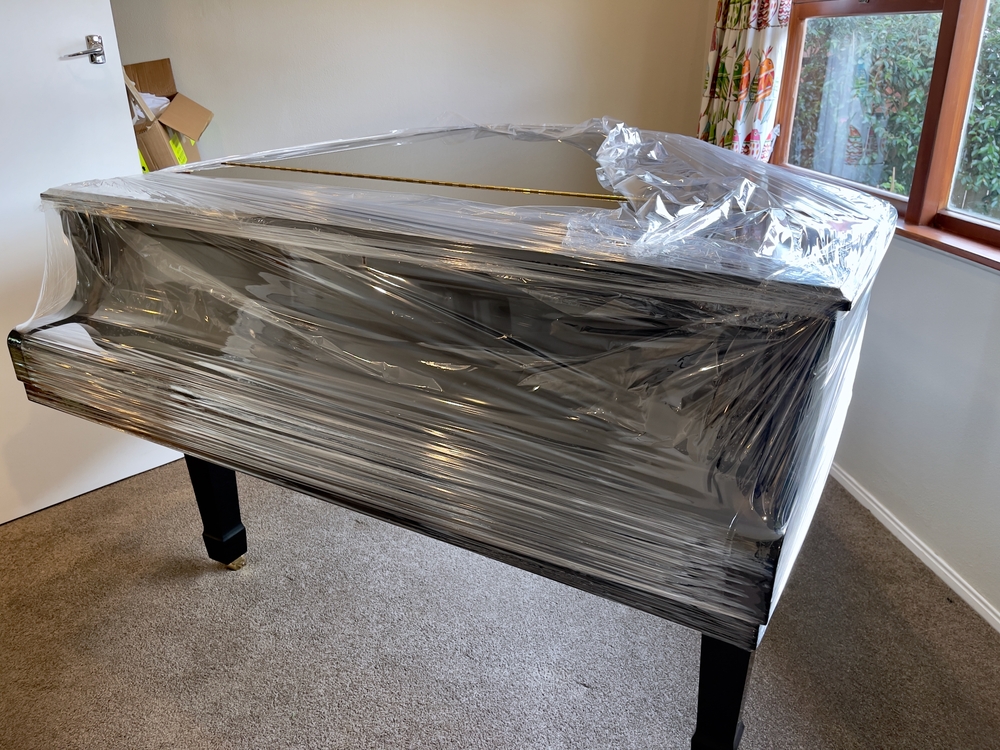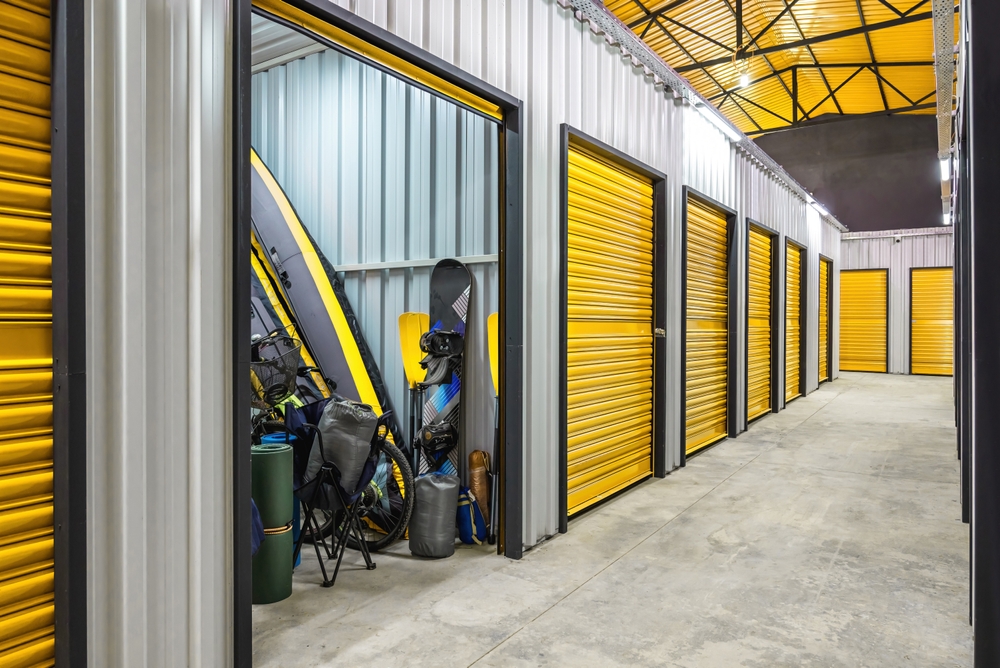5 Essential Services You Should Expect from Your Removalist
June 18, 2025
Moving can be a major undertaking, whether you're relocating a home or a business on the Central Coast. From planning logistics to handling heavy furniture and keeping track of your belongings, there are countless details that need attention. At Norm Eacott Removals & Storage, we understand the stress that often comes with moving—and we believe it doesn’t have to be that way.
A successful move involves more than just getting your items from one place to another. The key is working with a removalist that provides comprehensive services to support every stage of the process—from professional packing to secure storage and specialised item handling. In this article, we’ll walk through five essential services that help make your move easier, safer, and more efficient.

The way your belongings are packed can make a significant difference in the safety and efficiency of your move. Whether you're relocating locally or across state lines, professional packing ensures your items are well-protected and that the process runs smoothly from start to finish.
Packing is more than just putting things in boxes—it requires careful planning, the right materials, and an understanding of how different items should be secured for transport. Fragile goods, bulky furniture, and sentimental possessions each demand their own approach. A professional removalist brings both experience and the proper resources to reduce the risk of breakages, speed up the moving timeline, and relieve you of one of the most time-consuming tasks.
Full-Service Packing:
Ideal for busy families, elderly clients, or those who simply want a hands-off move. This service covers everything—from carefully wrapping glassware and packing electronics to boxing up books, clothes, and kitchenware. A detailed inventory is also created, helping to keep track of every item from your old home to your new one.
Fragile Items Only:
If you’d prefer to handle most of the packing yourself but want to ensure delicate items are protected, you can choose to have only your fragile or high-value goods packed by professionals. This includes artwork, mirrors, glassware, antiques, and electronics—all of which are packed using custom materials for maximum safety.
Faster Settling-In:
Unpacking can take days—or even weeks—when you’re doing it alone. With a professional team, items are quickly unpacked and placed in the correct rooms so you can start living comfortably in your new space right away.
Organised Layout:
Professional unpackers follow your instructions and home layout to ensure everything goes where it belongs. Kitchen items are neatly stored in cupboards, bedroom items go straight into wardrobes, and essential items are made readily accessible.
Less Stress and Physical Strain:
After the mental and physical effort of moving day, the last thing most people want to do is tackle mountains of boxes. Professional unpacking takes that load off your shoulders and speeds up your transition into a normal routine.
Large and bulky furniture is often one of the trickiest parts of any move. Beds, wardrobes, dining tables, and sectional sofas can be difficult to manoeuvre through doorways or hallways—and attempting to move them without disassembly can lead to damage, delays, or even injury. That’s why furniture disassembly and reassembly is a key service to look for when choosing a removalist.
Smoother Transport:
Breaking down large items into manageable components makes them far easier to carry and load into the truck. It also reduces the risk of damaging your property—such as scratching walls, denting doors, or scuffing floors.
Safer Moving Conditions:
Moving heavy or awkwardly shaped furniture without proper tools and techniques can result in strained muscles, dropped items, or worse. Professional removalists use lifting straps, trolleys, and protective padding to minimise risks and ensure safe handling.
Quick and Correct Reassembly:
Once at your new location, a skilled removalist will reassemble your furniture properly and securely. This means you won’t have to waste time searching for lost screws or trying to recall how things were put together in the first place.
Structural Integrity:
Improper reassembly can weaken furniture, cause instability, or even create safety hazards. Professional removalists know how to correctly realign joints and tighten fixtures, maintaining the strength and durability of each piece.
Avoiding Long-Term Damage:
Using the wrong tools or forcing components back together can damage materials or strip hardware. A professional approach helps preserve your furniture’s condition.
Ready to Use:
When your furniture is reassembled correctly and placed in the right location, you can settle in faster and avoid the added stress of troubleshooting missing parts or wobbly legs.

Not all belongings can be treated the same when it comes to moving. Items like pianos, antique furniture, fine art, and other valuables require special handling, equipment, and experience to ensure they arrive safely. These aren’t just possessions, they’re often irreplaceable and carry sentimental or financial value. That’s why having a removalist who offers specialty item transport is so important.
Delicate and High-Value Items Need Extra Care:
Pianos, antiques, and artworks are often fragile and can be easily damaged if not packed and moved correctly. Standard packing materials and techniques may not provide enough protection for these items.
Challenging Dimensions and Weights:
Many specialty items are oversized, oddly shaped, or heavy, which makes them harder to move safely. It’s not just about lifting strength—it’s about knowing how to move these items through tight spaces, down stairs, and onto trucks without causing damage to the item or the surroundings.
Technical Knowledge Is Essential:
Whether it’s removing the legs from a grand piano or securing a large painting in a custom crate, these tasks require know-how and the right tools. Experienced removalists understand the best way to prepare, load, and secure specialty items for transport.
Pianos:
Antiques and Collectibles:
Art and Fragile Décor:
To ensure your removalist is equipped to move your valuables, ask:
By working with a team experienced in specialty item transport, you protect your most precious belongings from damage—and gain peace of mind knowing they’ll arrive safely at your new destination.
No matter how careful your removalist is, moving always carries some risk. Accidents can happen—furniture might get scratched, boxes might shift in transit, or an unforeseen event could lead to damage or loss. That’s why understanding the insurance and liability options offered by your removalist is essential. It’s not just about protecting your belongings—it’s about protecting your peace of mind.
Transit Insurance:
This covers your belongings while they are being transported from one location to another. Depending on the policy, it may protect against loss, theft, and accidental damage during loading, unloading, and transit.
Public Liability Insurance:
Covers third-party property damage or injury caused during the move. For example, if a removalist accidentally damages a neighbour’s fence while manoeuvring your fridge, this type of insurance handles the claim.
Goods in Storage Insurance:
If you’re placing items in short- or long-term storage, this coverage protects them while they’re at the storage facility. It can include protection against fire, theft, flood, and other risks depending on the policy.
Know What’s Covered (and What’s Not):
Insurance policies often have exclusions, such as no cover for jewellery, cash, or fragile items not packed by the removalist. Always check the fine print so you know exactly what you’re entitled to.
Avoid Disputes Later:
Clear communication about insurance prevents surprises if something goes wrong. Knowing your coverage limits, the claims process, and responsibilities upfront helps prevent delays and disagreements.
Peace of Mind During the Move:
With proper coverage in place, you can focus on the move without the constant worry of potential damage or loss.
By asking the right questions and understanding the available insurance options, you’ll be prepared for any scenario and better protected during your move.

Sometimes, a move doesn’t happen all at once. Whether you’re between homes, renovating, downsizing, or simply need extra space, secure storage can play a crucial role in making your relocation more manageable. A quality removalist should offer flexible storage options that protect your belongings and give you time to move at your own pace.
In-Between Moves:
If there’s a gap between moving out and moving in, storage gives you a safe place to keep your furniture and belongings while you wait. This is common during settlement delays or while waiting for a lease to begin.
During Renovations:
Home improvements can be messy and disruptive. Putting your furniture into storage keeps it clean, safe, and out of the way during construction or renovation work.
Downsizing or Decluttering:
Moving into a smaller home doesn’t always mean parting with everything. Long-term storage can give you time to sort through items gradually and make decisions without pressure.
Extended Travel or Life Changes:
Whether you’re heading overseas for a while, managing an estate, or going through a major life event, storage can provide a secure and stable solution for your belongings.
Self-Storage Units:
These are individual, lockable spaces where you can store your belongings for short or long periods. They’re ideal if you want regular access to your items and prefer to manage things yourself.
Container Storage:
In this option, your belongings are packed into large wooden or steel containers, sealed, and kept in a secure warehouse. It’s often more affordable and is especially convenient if you don’t need regular access.
Climate-Controlled Storage:
Some items—like antiques, musical instruments, artwork, or sensitive electronics—require stable temperature and humidity levels. Climate-controlled units protect against heat, cold, moisture, and mould.
By choosing a removalist with reliable, flexible storage services, you gain greater control over your move—whether it’s temporary storage during a short delay or a longer-term solution while you settle in.
Moving doesn’t have to be a stressful or chaotic experience. With the right support services in place, you can take control of your move and feel confident every step of the way. From professional packing and unpacking to safe furniture handling, specialised transport, secure storage, and proper insurance coverage, each of these services plays a vital role in making your transition smoother, faster, and more secure.